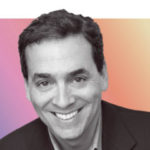Jamal Aaron Hageb, senior meeting manager for the Washington, D.C.–based American Bar Association (ABA), negotiated a $149 room rate for a December convention he is planning in San Juan, Puerto Rico. So how is it that when the convention concludes, attendees could end up paying more than $179 a night? Blame it on taxes and fees piled on top of the agreed-upon rate, a practice that makes Hageb feel “nickel and dimed.” “[The hotel] hit me with all these hidden assessment fees,” Hageb said. “If you don’t look at the fine print, you put your- self and your institution at risk for financial liability.” It’s not just occupancy and sales taxes that give industry professionals like Hageb a headache. The proliferation of “special assessments” – local bed taxes that range from 1 to 5 percent or more of the room charge – has some planners wondering why their attendees’ hotel bills are looking more and more like an itemized bill for digital cable.
CVB executives have an answer: Special assessments, they say, are a necessary evil to fund convention centers, websites, airport welcome booths, signage, and all the “free” services you expect when bringing a convention to a city. “Some [special assessments] are called tourism-promotion fees, others are called a convention-center tax or auditorium tax. Almost every city has them,” said Karen Staples, CMP, CASE, eastern regional director of sales for Visit Spokane. “Those fees actually become a fund available to help pay for things that planners find challenging in a particular city. It’s a real benefit.”
That may be true, but for planners these assessments add up to “a significant amount,” said Stuart Ruff, CMP, CGMP, senior planner of meetings, conventions, and events strategy for the New York City–based International Trademark Association (INTA). INTA holds four international and four large domestic conferences annually, ranging from 250 to more than 9,000 attendees. “Personally, sometimes I do wonder what these taxes are and where the money is going,” Ruff said. “I’ll pay more attention if the amount is really high. But I can’t really do anything about it. We probably wouldn’t walk away from a property over it.”
What They Mean By Special Assessment
Over the past three years, cities including Boston, New York, Las Vegas, Baltimore, San Jose, Calif., and Atlanta have increased room taxes with special assessments. The last major study on the issue, conducted by the American Hotel & Lodging Association in 2008, showed that room taxes generate $14 billion annually, with an average tax of 12.62 percent. In a 2011 survey by the U.S. Travel Association, 68 percent of travelers complained hotel taxes were “very high” or “high.”
In San Diego, for example, hoteliers on April 24 approved a proposal for a tiered assessment of 1 to 3 percent of a hotel’s room rate (depending on the property’s proximity to downtown) to fund a $550-million expansion of the convention center. The tax will be added to an existing 10.5-percent transient occupancy tax and a 2-percent Tourism Marketing District (TMD) tax. With all those taxes added in, an advertised room rate of, say, $239 would total $275.
The 2-percent TMD tax was the city’s first special assessment on hotel rooms, levied in 2008 when, “frankly, the city stopped funding tourism,” said Joe Terzi, president and CEO of the San Diego Convention & Visitors Bureau. The success of the TMD tax was the basis for the convention-center special assessment. “Those funds go directly to pay for the bonding of the projected costs of the convention center expansion,” Terzi said. “It’s a significant expansion.”
Indeed, when the expansion is completed, the center will have the largest exhibit hall on the West Coast, with a little less than 800,000 square feet of contiguous exhibit space, as well as an additional 80,000-square-foot ballroom and another 100,000 square feet of meeting space. Revenues from the new tax would cover about three-quarters of the bonds needed for the project, Terzi said, with the city and port of San Diego covering the rest. “We’ll be graduating from what I think of as mid-tier size to the upper tier and able to accommodate some of the premium, larger conventions that we’re either shut out of or lose because we don’t have enough space,” Terzi said. “It’s a major enhancement to the existing building.”
Hotels in Sacramento, Calif., recently approved an increase in the city’s TMD tax – from a flat $1.50 fee to a rate of 1 to 3 percent of the room rate, based on a hotel’s proximity to the downtown core, said Steve Hammond, president and CEO of the Sacramento Convention & Visitors Bureau. The city’s previously existing occupancy tax plus the district tax will range from 13 to 15 percent total, a rate that Hammond calls “very competitive” with other cities throughout California. The funds from the increased TMD tax are slated for online marketing and promotion, familiarization tours for planners, and education programs for local hospitality and lodging managers on service enhancements and marketing strategies in the meetings industry.
It’s the first increase to Sacramento’s TMD tax in more than a decade, according to Hammond. At the time it was first implemented, in 2001, it was only the second such assessment levied in the state. “Since that time, 65 new tourism BIDs [Business Improvement Districts] have been established, and there are about 10 more in some phase of planning,” Hammond said. “As you can see from these numbers, assessments have become very commonplace. During this challenging economy, our hotels have agreed to a modest increase to ensure that the Sacramento Convention & Visitors Bureau has the resources to continue to deliver the types of services that meeting planners and visitors have come to expect from Sacramento.”
Where Your Occupancy Tax Really Goes
A common misconception among planners is that general occupancy taxes stay within a city or destination to fund local tourism and hospitality projects, said Visit Spokane’s Staples. Instead, states and cities often use these revenues to boost transportation and airport budgets; or they’re put into a large general fund that Staples calls a “big, black hole.” “Planners just don’t understand [occupancy taxes],” she said, “because they are just looking at their budget and their bottom line, and they always complain.”
Of the 15 percent or so collected in occupancy tax, the city or state may give back “1 or 2 percent” to convention bureaus for marketing purposes, Staples said, and a CVB will set aside some of that money to incentivize new business. While Spokane uses part of its allocation from occupancy-tax revenues to fund grants for member projects and initiatives such as new signage and to pay for transportation costs to bring planners in for fam trips, Staples said, the revenue isn’t reliable enough for large or sustained projects such as a convention-center expansion. “Those taxes that we get back from the state are always, in the eyes of the legislature, volatile. They can always be cut back,” Staples said. “To them, it’s ‘found money,’ and they don’t get what we do.”
Without those funds, however, Visit Spokane wouldn’t be able to provide additional wayfinding services for attendees, host the Visit Spokane website, and offer brochures, among other complimentary services that planners have come to expect from the CVB. “[Planners] forget that it’s free to you,” Staples said, adding that it’s difficult for them to understand what revenues fund particular services, because every state has its own unique policy on the use of room taxes.
In Sacramento’s case, revenue from the main room tax called the transient occupancy tax – is forwarded to the city’s general fund, and then allocated to the CVB for a variety of convention services, to local special-event organizers, to the Sacramento Community Theater, and to the city’s police and fire departments, Hammond said, to “ensure that Sacramento continues its high-level execution of clean and safe programs for our visitors.”
The San Diego CVB fares even worse. “Transient occupancy taxes were put in place for marketing. They were actually to promote tourism to cities, states, and communities – and then they morphed into something else,” Terzi said. “They morphed into opportunities for general funds. Right now, our 10.5[-percent] transient occupancy tax goes all to the city, right into the general fund, and none of it is spent on tourism promotion. It’s the same in a lot of cities, where there have been economic challenges.”
Cities and states have become dependent on occupancy taxes for general revenues, Terzi said, and can no longer afford to pay for projects like convention centers or business development. “You’ll see expansions happening with partnerships and private sources of funding, because it’s the only way it will get done – not unlike building stadiums,” Terzi said. “It has to be a different funding model. There has to be other sources of income, because these municipalities just don’t have the capacity to do it anymore.”
Why Destinations Need More
Because of a state’s or city’s “sticky fingers” on occupancy- and sales-tax revenues, Staples said, destinations use special assessments to fund local projects and tourism marketing. These assessments typically are voted on by the community and entail specific requirements on what the money can be used for.
In Boise, Idaho, a 6-percent sales tax and a 2-percent travel and convention tax on hotel rooms are remitted to the state for distribution, according to Patrick D. Rice, executive director of the Boise Centre and the Greater Boise Auditorium District (GBAD) – which also levies a 5-percent “auditorium tax” on hotel rooms in the area to fund a pro- posed expansion of Boise Centre. With a total tax charge of 13 percent on area hotel rooms, Rice said, Boise is in the “lower- third tax costs of destination cities.”
Without the auditorium tax, which is capped at 5 percent by state law, an expansion of the center probably wouldn’t happen, because “auditorium districts in Idaho have no authority over other taxes,” Rice said. He added: “The funds for the district can be used for any statutory purpose, including our expansion plans and other costs associated with the district or Boise Centre. The current GBAD board of directors has specifically designated $9 million, and other future funds for investing, to be used for an expansion. Other funds are used to support the capital expenditures and other projects for the Boise Centre.”
But is a special assessment the answer? GBAD thinks so. Separate studies by PricewaterhouseCoopers and consulting firm Conventions, Sports & Leisure International indicate that doubling Boise Centre’s 50,000 square feet of avail- able exhibit space and adding ballroom and meeting-room capacity, Rice said, would make the city more competitive as a second-tier destination for meetings and conventions. “The Boise Centre currently competes for 20 percent of the convention market,” Rice said. “An expansion would not only provide room for larger conventions – up to 60 percent of the convention market – but also allow for multiple events that cannot currently be accommodated in Boise Centre alone. The expansion is important to help economic development.”
How to Come to Terms With This
Once planners understand the role that special assessments play in funding infrastructure projects and vital services, CVB leaders says, they’re often very supportive. So it’s a bureau’s responsibility to make sure the message gets out. The San Diego CVB plans a comprehensive marketing campaign about the convention-center expansion now that the new tax has been approved. “Once [the new assessment] is set, there is some work to be done in how we position it,” Terzi said. “Meeting planners generally get it. We look very closely at where San Diego falls with most of the major cities around the country – which bounce between 14 and 18 per- cent overall [in hospitality and tourism taxes] once you add it all up. We’re in the ballpark. We’re not more expensive than most of our competitors.”
Terzi said he also would remind planners of his bureau’s advocacy on behalf of the industry in two failed proposals to increase the transient occupancy tax since 2004. (The first tax increase was opposed by the CVB because the money wouldn’t go directly back to tourism infrastructure, and it failed. The second increase was backed by the CVB because it would fund tourism infrastructure – but it failed as well.) “We have to have enough money to be competitive,” Terzi said. “It’s big business, and I think the industry recognizes it wants to control its own destiny.”
Planners say they do support these assessments and the projects they fund – as long as they’re able to prepare their attendees for the extra expense in advance. “Some planners want everything free, but I know the hotels and convention centers are not a favor factory,” said ABA’s Hageb. “They are there to make money – but they can’t be greedy about it.”
INTA’s Ruff said it’s essential to inform attendees of the total cost of the room before an event, to avoid any unwelcome surprises during checkout. “We always list the taxes that are on top of our hotel rates, so that our attendees do not have sticker shock at checkout,” Ruff said. “As an experienced planner, I know all too well that a $159 rate can really mean $200-plus a night, and I do feel that we have the ethical responsibility to communicate, in advance, the total per- night spend one can estimate.”
Bed taxes may be annoying, Ruff said, but planners better get used to them, because they’re here to stay. So meet the challenge head on, partner with CVBs and DMOs from the start – and be proactive in asking questions about taxes and getting clarification for “true responsibility in budgeting for attendees.” Ruff said: “I’m fortunate to have a good relation- ship with the CVB in the destinations I go to. That’s the first place I go. It’s one-stop shopping on tax issues.”
Planners may even successfully use taxes as a negotiation point, as Hageb did with his upcoming convention in San Juan. After he complained about the excessive fees and assessments, the hotel offered a $159 rate for attendees – including taxes.
“If your piece of business is of value, the hotels will work with you,” Hageb said. “You really have to look at what the proposal was and compare it to the final contract. If it differs dramatically, then find out why. Find out what these fees and assessments really are. If [the tax] is not going to benefit you, it doesn’t make sense to pay it..”
Test Time
Here’s how to earn your CEU hour. Once you finish reading this CMP Series article, read the following material:
- A composite profile of a destination marketing organization from Destination Marketing Association International (DMAI).
- “Between a Block and a Hard Place,” a feature article about the convention-center pricing model from the May 2011 issue of Convene.
To earn one hour of CEU credit, visit pcma.org/convene-cmp-
To earn additional credit, you can take more more tests in our series here: pcma.co/ConveneCEUs
The Certified Meeting Professional (CMP) is a registered trademark of the Convention Industry Council.
More Resources
- For a list of lodging taxes in the top 50 U.S. destinations, published in the November 2011 issue of Convene, visit convn.org/lodging-taxes.
- The GBTA Foundation conducts an annual study of car rental, hotel, and meal taxes in the top 50 U.S. travel destination cities. For highlights of the most recent study results, released last July, visit convn.org/gbta-taxes.



